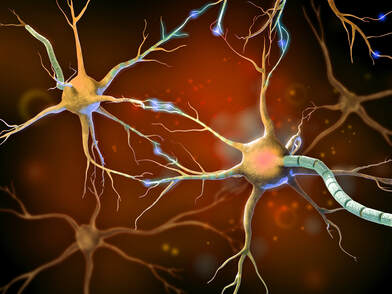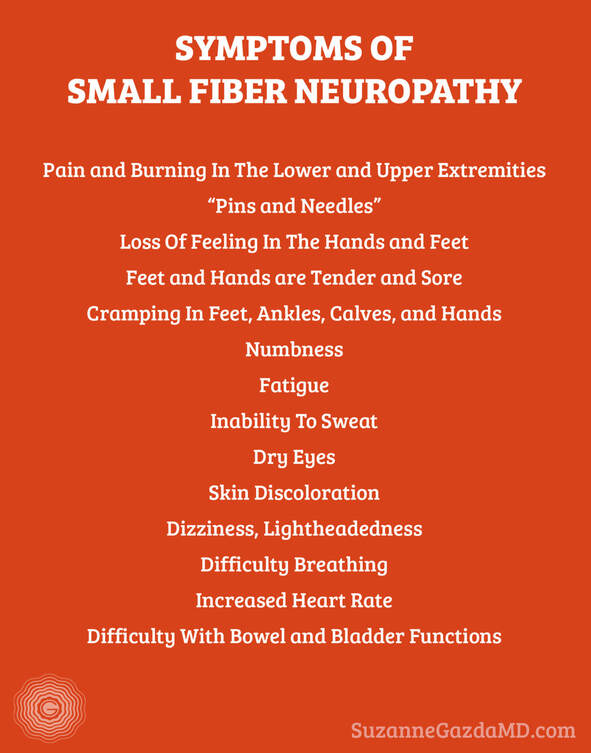|
While you may not necessarily be familiar with the disorder “small fiber neuropathy (SFN)” it actually has a global prevalence of approximately four million individuals although the incidence is probably much higher than currently identified as quite often patients may not be fully evaluated for this condition. News of a recent clinical trial examining SNF and whether intravenous immunoglobulin (IVIG) could be an effective protocol bears taking a closer look at the study details. So what is SNF? A small fiber neuropathy occurs when damage to the peripheral nerves predominantly or entirely affects the small myelinated (Aδ) fibers or unmyelinated C fibers. The specific fiber types involved in this process include both small somatic and autonomic nerve fibers. The sensory functions of these fibers include thermal perception and nociception as well as a number of autonomic and enteric functions.
Small fiber neuropathies along with mixed small and large fiber neuropathies have many potential causes such as: diabetes; vitamin deficiencies (B12); environmental and toxic exposures; HIV; autoimmune disease; and paraproteinemias, which are often associated with conditions like multiple myeloma. Patients may experience symptoms related to a primary diagnosis or as a result of SNF and can include sensory issues like pins-and-needles, tingling and numbness or burning pain or coldness and electric shock-like intermittent pains. Fifty percent of SFN cases are idiopathic or have no known cause, but novel antibodies to trisulfated disaccharide IsoA2S-G1cNS-6S (TS-HDS), fibroblast growth factor receptor 3 (FGFR-3), and Plexin-D1 have been implicated in cryptogenic SFN or neuropathic pain and as well dysautonomia. As such, seropositive patients (for autoantibodies) may substantially improve with IVIG.1
The article noted details of a second case started with intractable occipital pain bilaterally, initially diagnosed as new daily persistent headache, and then progressed to a peripheral neuropathy and painful proximal myopathy and severely elevated CK level. And a third case presented with distal, painless muscle wasting and profound weakness with loss of pinprick sensation, but was associated with diplopia and ptosis on fatigue. Autoantibodies are being used as a diagnostic marker. Clinical trials are underway to further investigate this protocol. The investigators in the clinical study recently uncovered two novel autoantibodies, TS-HDS and FGFR-3, that are targeted against peripheral neural structure. TS-HDS is a disaccharide component of glycosylation of heparin and heparin sulfate.  From the clinical trial’s detailed description:3 The antibodies to TS-HDS and FGFR-3 are detected in up to 20% of patients with otherwise idiopathic small fiber neuropathy, but are rare in patients without small fiber neuropathy. The investigators hypothesize that individuals with auto-antibodies targeting neuronal antigens (TS-HDS and FGFR3) and confirmed evidence of small fiber neuropathy (by skin biopsy analysis of intra-epidermal nerve fiber density) will have an improvement in both nerve fiber density and pain after treatment with immune globulin. Co-investigator for this project, Dr. Levine, recently presented three cases of small fiber associated with elevated levels of auto-antibodies to TS-HDS or FGFR-3 who were treated with IVIG at 2 gm/kg/month for 6 months. He examined skin biopsies for intra-epidermal nerve fiber density and patient self-reported pain scores at baseline and after six months of therapy. All 3 cases showed marked improvement in pain scores. The average reduction in pain was 54%. In addition there was a clear increase in the intra-epidermal nerve fiber density (IENFD) after 6 months of therapy. Pre-treatment IENFD was 1.6, 1.7, and 2.4 at the calf. After 6 months of therapy the IENFD was 8.4, 5.7, 3.3 respectively (these are clinically significant improvement in nerve fiber density. The investigators believe these anecdotal cases suggest that TS-HDS and FGFR-3 antibodies may be a marker for a group of SFN patients that are immune mediated and may respond to IVIG. The objective of this study is to develop a rationale for the selective treatment of small fiber neuropathy with immune globulin (IVIG) in the appropriate patients. The investigators hypothesize that individuals with auto-antibodies targeting neuronal antigens (TS-HDS and FGFR3) and confirmed evidence of small fiber neuropathy (by skin biopsy analysis of intra-epidermal nerve fiber density) will have an improvement in both nerve fiber density and pain after treatment with immune globulin. The co-primary endpoints will be a change in neuropathic pain (by VAS pain score) and a change in intra-epidermal nerve fiber density (by punch skin biopsy). The data gained from this pilot study will establish a rationale, with an appropriate screening test, for the use of immune globulin for the treatment of small fiber neuropathy. More research, more hope. As we see more and more research focusing on the use of IVIG in applicable instances, we are greatly encouraged at its potential for offering additional therapeutic options to patients challenged by numerous disorders. We look forward to seeing the results of these trials and learning more as well. In hope and healing, Dr. Suzanne Gazda References and additional reading: 1 Ylec Cardenas Castillo, Idaira Aguilar Tejedor, Benison Keung, Bertrand Tseng, Richard Nowak, Bhaskar Roy. Clinical Characteristics of TS-HDS and FGFR3 Antibodies in Chronic Inflammatory Neuropathies (5171). Neurology Apr 2021, 96. (15 Supplement) 5171. https://n.neurology.org/content/96/15_Supplement/5171 2 Lucchese, S. Several Atypical Presentations of TS-HDS Associated Neuropathies. Neurology Apr 2016, 86 (16 Supplement) P6.269; https://n.neurology.org/content/86/16_Supplement/P6.269 3 ClinicalTrials.gov. ClinicalTrials.gov Identifier: NCT03401073. IVIg for Small Fiber Neuropathy With Autoantibodies TS-HDS and FGFR3. Sponsor Beth Israel Deaconess Medical Center, information details provided by Christopher Gibbons, MD, Beth Israel Deaconess Medical Center. https://clinicaltrials.gov/ct2/show/NCT03401073 Trevino JA, Novak P. TS-HDS and FGFR3 antibodies in small fiber neuropathy and Dysautonomia [published online ahead of print, 2021 Apr 1]. Muscle Nerve. 2021;10.1002/mus.27245. doi:10.1002/mus.27245. https://pubmed.ncbi.nlm.nih.gov/33792960/ Center Watch, Clinical Trials information https://www.centerwatch.com/clinical-trials/listings/212909/ivig-for-small-fiber-neuropathy-with-autoantibodies-ts-hds-and-fgfr3/
0 Comments
Your comment will be posted after it is approved.
Leave a Reply. |
AuthorDr. Suzanne Gazda, Integrative Neurology Archives
February 2024
Categories |


 RSS Feed
RSS Feed